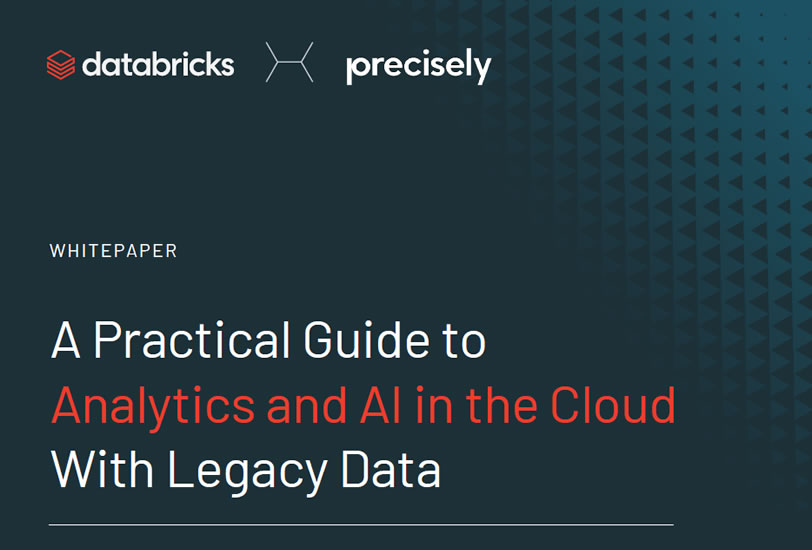White Paper
A Practical Guide to Analytics and AI in the Cloud with Legacy Data
Databricks and Precisely: Access Legacy Data in the Cloud for Analytics, Data Science and Machine Learning
Businesses that use legacy data sources such as mainframe and IBM i have invested heavily in building a reliable data platform. At the same time, these enterprises want to move data into the cloud for the latest in analytics, data science and machine learning. Databricks and Precisely have partnered to help make it easy and reliable to integrate legacy data into modern cloud data platforms for analytics and AI.
The Cost of Legacy Data Across the enterprise, legacy systems such as mainframe and IBM i serve as a critical piece of infrastructure that is ripe with opportunity for integration with modern analytics platforms. If a modern analytics platform is only as good as the data fed into it, that means enterprises must include all data sources for success. However, many complexities can occur when organizations look to build the data integration pipelines between their modern analytics platform and legacy sources. As a result, the plans made to connect these two areas are often easier said than done.
Challenges Specific to Extracting Mainframe and IBM i Data
With so much valuable data on mainframe and IBM i, the most logical thing to do would be to connect these legacy data sources to a modern data platform. However, many complexities can occur when organizations begin to build integration pipelines to legacy sources. As a result, the plans made to connect these two areas are often easier said than done.
Download this whitepaper to learn:
- How to avoid the common challenges that organizations face when integrating legacy data into their cloud data platforms
- Best practices for quickly ingesting data from cloud and on-premises sources – such as mainframe and IBM i – for use within the Databricks Unified Data Analytics Platform and Delta Lake
- How one organization used Connect modernize their ETL processes and lower development cost with visual data pipelines that use the elastic scalability of Databricks Unified Data Analytics Platform
I agree that by signing up for this content, I am expressly consenting to provide my registration information, including name, email, etc., to Precisely and Databricks the co-sponsor(s) of the content. Databricks may use my information in accordance with their privacy policy.
